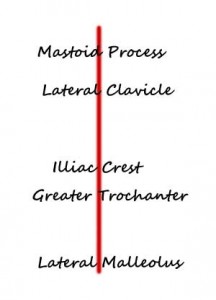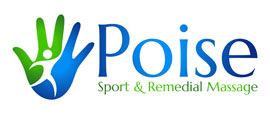Posture. We all have it, although most of us live our lives completely oblivious to it, or do our best to ignore it. Posture though is integral to everything we do and slight imbalances can cause a ripple effect that spreads wider than we can imagine. Our bodies constantly fight gravity – and very often ourselves – to keep us upright. Other factors such as injury, stress and our lifestyle can also play their part. Imagine you have injured your ankle and start to limp. In order for you stay upright and keep functioning, all the surrounding muscles and joints will begin to adapt to help you walk, taking on extra work to keep you moving. Your other leg will start to take up more of your body weight (contributing to the limp you may have developed), so the alignment of your hips will begin to shift. Your whole posture will begin to alter as your body adapts to the injury and the continued demands of gravity. Your body is fantastic at adapting to keep you moving and helping you to stay upright.
Looking at your posture then can reveal a lot about what musculoskeletal problems you may have. Where are your muscles strong or weak? Which part of your body is working too much or too little? You may already have some idea where the problem is but often a postural assessment can reveal that in fact the problem started in a completely different place (think back to all those surrounding muscles that began to help out for an ankle sprain). The postural assessment is in effect a map to be read and pointing to the correct road to follow.
In March and April I ran a series of free postural assessment clinics. I had, to be honest intended to just run a single clinic, but I found that the response was so great that I arranged a number of extra clinics to meet the demand. Everyone that came was curious about what a postural assessment was and what their bodies said about them. There was a degree of apprehension too. Postural assessments are done in underwear and there is an understandable degree of discomfort in standing in front of a stranger in your underwear. This is quickly overcome though as the assessment gets underway. Most knew what problem areas they had but almost without exception, no one was aware of the dramatic effect this had on their posture. For most the assessment was revelatory.
Ideal Posture

So what is ideal posture anyway? Imagine standing with your feet a little apart and your arms by your side, palms facing forward. Now imagine a plumb line going down the side of your body from head to feet. On the way up it passes through your outer ankle bone (lateral Malleolus), knee, upper leg (Greater Trochanter), the top of your pelvis (Illiac Crest), the top of your arm where the crease runs in to your armpit (lateral Clavicle) and just behind your ear (Mastoid Process). If your body hits all these points then your muscles and skeleton is in neutral. Nothing is too far in front or behind this imaginary plumb line.
With ideal posture you could probably walk whilst balancing books on your head! In reality, though, we rarely stand in this static idealised position. Even ‘living statues’ have yet to adopt the anatomical position as a crowd pleaser.
Moving from the Ideal
If, like most people, you have strayed from the ideal position, what effect can his have?
Lets imagine you are carrying a lot of weight around your stomach that is pulling your pelvis forward (an anterior pelvic tilt). Your hips are shortened because of the tilt, continually flexing your hips. Your knees may be braced to counteract the weight transfer, causing them to hyperextend and your feet are digging into the ground (plantar flexing). Because of your pelvic tilt, your bottom is sticking out hyperextending your lower back (lordosis). Your upper spine may now also hyperextend to balance your bottom but adding to the stress placed at your spine. Finally your head moves forward to try to balance all the movement that has fallen behind that imaginary plumb line.
Maybe hip shortening is caused by instead by sitting down all day, whether at a desk or because your job involves a lot of driving, put your hip into a state of constant hip flexion. Or perhaps your body is reacting to stress – a common sign being raised shoulders (on both or one side) in a protective movement most are completely unaware of.
The postural assessment is a great tool to spot the problem areas and identify muscles that may require further testing before a sport & remedial massage. Those that came for a massage after their postural assessment could see why specific muscles and soft tissue were being worked and when adhesions were found they were not unexpected. Instead they could really understand, and get involved with, their massage. The fight against gravity got that little bit easier.
